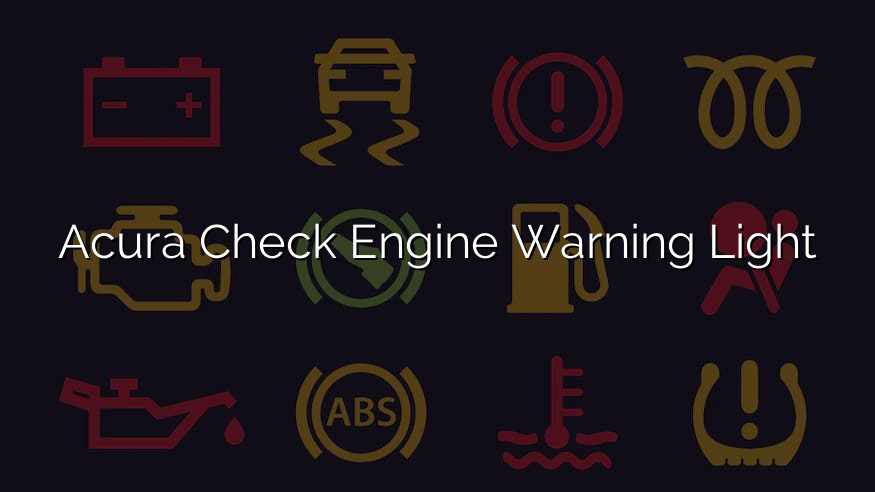If you’ve ever had an issue with your Acura, you’re not alone. According to the National Highway Traffic Safety Administration (NHTSA), Acura is one of the most frequently cited brands for Check Engine lights. In fact, Acura vehicles are the third most common vehicles on the road that get Check Engine lights. What does this mean for you? It means that if you have an Acura, it’s important to know what these lights mean and how to address them. In this blog post, we will discuss what the different Acura Check Engine warning light codes mean and what you can do to fix them. We will also include a step-by-step guide on how to clear a code using a scanner. Finally, we will provide some tips on how to prevent Check Engine lights in the first place.
TSX Dashboard Warning LightsWhat is the Acura Check Engine Warning Light?
The Acura Check Engine Warning Light is a warning light that indicates an issue with the car’s engine. The light may turn on if there is an issue with the air conditioning, fuel system, or other components. If you see the Acura Check Engine Warning Light turn on, it’s important to take your car to a mechanic to determine what the issue is and fix it as soon as possible.
What to do if you get a Acura Check Engine Warning Light
If you get a Acura Check Engine Warning Light, there are a few things you can do to check the engine and fix the problem. The warning light may mean that there is an issue with one of the engine’s components, so it’s important to take action before the problem becomes worse. Here are some tips on how to check and fix the issue:
- Check for any debris or dirt in the air filter. This can cause a build-up of dirt and dust which can block airflow and eventually lead to an issue with your engine. If there is any debris or dirt in the air filter, remove it using a vacuum cleaner or a duster.
- Make sure all of your vehicle’s oil levels are correct. An incorrect oil level can also cause damage to your engine. To check your oil level, use a dipstick or an automatic oil changer. Make sure that each fluid level is at or near the top of its designated range.
- Check for any loose screws or bolts around your engine bay area. These small issues can easily become big problems if not fixed soon enough. Check for loose screws or bolts around battery cover, header panel, hood release cable bracket, air conditioner condenser fan motor mountings, brake booster hose clamp screw, fuelling system connector (FSI) bracket nut and throttle body/fuel injection (TBI) linkage bracket nut). If any are found to be loose, tighten them up using a
How to Fix a Acura Check Engine Warning Light
If you’re driving a 2002-2006 Acura TL, there’s a good chance you’ve experienced the dreaded “check engine warning light.” If your Acura TL is displaying this light, it means your car has one or more problems with its engine. Unfortunately, there isn’t always an easy way to fix these problems, and sometimes they require expensive repairs. But don’t despair! There are a few things you can do to try to fix the problem on your own.
The first step is to determine what the actual problem is. Do some research online or call your dealership and ask them about the check engine warning light and what it might mean. Once you know what the problem is, you can start trying to fix it.
One common cause of the “check engine warning light” is a bad catalytic converter. If this part of your car isn’t working correctly, gas fumes will continue leaking into the engine and eventually cause damage. In order to fix this problem, you may need to replace the converter entirely or just upgrade it to a newer model.
Another common cause of the “check engine warning light” is a bad sensor in your car’s fuel injection system. This sensor detects when injectors are sending too much fuel into the engine, and if it starts getting triggered frequently that can lead to other problems down the road.
If you’re experiencing a Acura Check Engine Warning Light, it’s important to take action as soon as possible. By following the steps in this article, you can ensure that your car is brought into compliance with safety guidelines and that any potential problems are addressed as quickly as possible. If you have any further questions or concerns, don’t hesitate to contact our team of experts at Acura.

